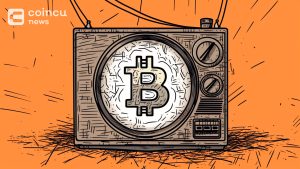With super-fast transactions and extremely low fees, the Solana blockchain quickly became a real contender in the “Ethereum killer” network. So what is driving one of the standout cryptocurrencies in 2021 and how is it threatening Ethereum?
Solana is a centralized blockchain platform that offers fast, affordable and scalable smart contract solutions. The network is described as idiosyncratic because of the unique method it uses to schedule transactions and handle higher blockchain throughput. SOL is the network’s native token that is used to interact with the Solana blockchain and conduct transactions.
Solana was founded in 2017 by Anatoly Yakovenko. Yakovenko worked for Qualcomm and Dropbox before building Solana. Together with co-founders Greg Fitzgerald and Eric Williams, Yakovenko tried to build a blockchain that would solve the throughput and scalability problems of Bitcoin and Ethereum without compromising too much.
Anatoly Yakovenko – founder / CEO Solana
Solana is the third generation blockchain like Cardano, Tezos and Polkadot. The platform seeks to challenge the current centralized traditional networks by improving and modifying the workings of first and second generation blockchains like Bitcoin and Ethereum.
Solana recently caught press attention after it was announced that Solana Labs had raised $ 314 million in new capital. This money will be used to develop decentralized finance (DeFi) technologies. The financing round was led by the well-known venture capital fund Andreessen Horowitz and Polychain Capital.
Sam Bankman-Fried of Alameda Research and FTX spoke about this project after raising capital, saying Solana has “the most ambitious roadmap for blockchain technology. You have made impressive progress. It’s a blockchain that has the potential to support the DeFi ecosystem with world-class operations. “
In addition, the SOL token has also performed well in recent months, outperforming the leading assets Bitcoin and ETH. The SOL price has increased ~ 2541% YTD (YTD) and ~ 184% over the past 3 months. For comparison: Bitcoin price has increased ~ 38% in the YTD timeframe, but has fallen ~ 32% in the last 3 months.
SOL / USD | Source: Tradingview
Why gThe technology solutions from Solana Success in terms of speed
Solana is a proof-of-stake blockchain that uses the same SHA-256 hashing function as Bitcoin. The platform uses a unique, trusted method to time a transaction called Proof of History (PoH).
The SHA-256 algorithm takes input from the user and encodes it to produce unique output that is difficult to predict. Solana takes the output of a transaction and uses it as input for the next hash. This is the order of the transactions made available in the hash output. This is different from how the Bitcoin blockchain works.
The PoH hashing process creates a long and unbroken chain of hash transactions. This is designed to create a clean and verifiable order of transactions so that when validators add to the block they don’t have to use timestamps as usual.
The blocks on the Bitcoin blockchain are very large and out of order. BTC miners manually add the date and time in their local time to the block they are mining. Other nodes in the network must then check whether the time stamp provided by the miner is valid, as it may be incorrect or different from the time reported by another miner. This will take more time.
However, by arranging transactions in a hash chain, the Solana validator can process and transmit less information per block. The hashed version of the latest transaction status is continuously recorded, which significantly reduces block confirmation time in the Solana chain.
PoH is combined with other Solana functions to optimize and accelerate throughput. For example, TowerBFT is Solana’s version of the Byzantine fault-tolerant PoS consensus model, which uses PoH-enabled cryptographic clocks to accelerate blockchain consensus by reducing messaging costs and latency. The process of selecting the next PoS node to validate the transaction block becomes faster because the nodes need less time to check the transaction order.
In a blog post from July 2019, Anatoly Yakovenko describes eight key innovations that make Solana the “first web-scale blockchain”. Besides PoH and Tower BFT, the remaining 6 main improvements are:
- Turbine – block transfer protocol.
- Gulf Stream – transaction forwarding log with no mempool.
- Sealevel – the time to execute smart contracts in parallel.
- Pipelining – transaction processing unit to optimize validation.
- Cloudbreak – a horizontally scaling account database.
- Archiver – Storage of distributed ledgers.
With all of these features, Solana can serve transactions and fees at a much lower speed and cost than other smart contract platforms.
Solana is currently running at 686 TPS (transactions per second) compared to Ethereum which is running at 13 TPS. Ethereum users will likely enjoy Solana’s throughput capabilities as, at the time of writing, 147,718 transactions are waiting to be confirmed by the Ethereum blockchain. Solana’s transaction fees for powering dapps and smart contracts are also very low, valued at $ 10 for a $ 1 million transaction.
Compare decentralized exchange Solana
As of June 17, 2021, Raydium, the most popular decentralized exchange (DEX) and automated market maker (AMM) on the Solana blockchain, has locked assets valued at ~ $ 405 million. Its 24 hour volume is $ 16,627,966. Meanwhile, Ethereum’s most popular Uniswap V3, DEX, and AMM have $ 1.82 billion in major assets and a 24-hour trading volume of ~ $ 823 million. Binance Smart Chain’s most popular DEX and AMM, Pancakeswap has $ 4.24 billion in major assets and a 24-hour trading volume of ~ $ 592 million.
One thing that sets Solana apart from other blockchains is that it uses an alternative programming language to Ethereum and is not compatible with EVM. On BSC, projects can simply copy and paste what was created on Ethereum and use the same Solidity language thanks to BSC’s EVM compatibility. On the flip side, Solana developers who create dapps like Raydium have to start from scratch. Solana is written in the Rust language and has fewer developers who build Dapps on it than Ethereum and BSC have access.
One of the biggest problems with using Solana is the lack of multifunctional block explorers or analytics platforms on the same network as Etherscan. There are very limited resources or data for fundamental analysis of the Solana blockchain, but it appears the development team is working to fix this.
On the other hand, Solana’s lack of compatibility with EVM and the fact that projects simply cannot be migrated from Ethereum right away mean there is less money robbery and fraud compared to kernel platforms than Ethereum versions like Binance Smart Chain .
Unplug the SOL to have So passive income
As mentioned earlier, Solana is a PoS blockchain that focuses on authorization. This means that anyone who has an SOL token can delegate part of their SOL to one or more validators who are responsible for processing transactions and operating the network. SOL users need to stake out or block their tokens with validators.
Website Staking rewards lists Solana as the fourth largest blockchain by asset value – with $ 12,051,737,950 already in use there. Cardano, Polkadot, and Ethereum are the 3 blockchain platforms that rank right ahead of Solana.
The current estimated interest rate for SOL holders delegating their tokens to validators is 10.2%. Adjusted for the inflation rate of the network supply, however, this interest rate fell to 2.5%. According to Staking Rewards, validators running Solana Node earn 11.31% interest, but when adjusted for grid supply inflation, that rate drops to 3.61%.
The specified SOL quota is 68.3%. Hence, more than 30% of the tokens are static and a large portion of SOL users may be speculators or may not have learned how to play.
68.3% SOL available is now staked | Source: Staking rewards
theatre and to plan marketing error
While Solana is the most popular blockchain in crypto media today, that doesn’t mean every project’s plans are scoring points.
In mid-June, Solana made a terrible mistake with a Tiktok marketing campaign with KOL Maren Altman. In it, she says that Solana’s low fees allow her to live in expensive Manhattan in the heart of New York. The over-the-top nature of the campaign was confusing and frustrating for the Twitter community as it departed from Solana’s earlier message of focusing solely on technology rather than currency. This promotional video was later removed.
Research Director at The Block, Larry Cermak, show Regret:
“It’s really hard to believe that anyone at Solana approved the campaign and thought it was a good idea. Reaching a new audience with TikTok is obvious, but in this way of getting that message across, it only brings sadness. “
comment by Twitter user Dana Hanna summed up the feelings of many in the Solana community.
“I have to say I’m sad to see how much money is being spent on social media KOLs while adding value here by spending hundreds of hours growing and answering questions on the Solana platform. Developers on your Discord channel for free “.
Such negative feedback underscores the difficulty projects like Solana are facing in expanding their user base into new demographic areas. Maren Altman’s video is part of a larger marketing campaign launched on the TikTok platform. In the US, 60% of TikTok users are between 16 and 24 years old. On Twitter, the largest user demographic (26.3%) is between 25 and 34 years old. Not only does Twitter demographics target older people more than TikTok, but it also has a higher percentage of male users. Recently it was estimated that only 44% of Twitter users are female compared to 60% on TikTok.
Famous KOL Maren Altman
In short, it makes perfect sense that Solana would be the …
























